Invisalign has revolutionized the field of orthodontics by offering an alternative to traditional metal braces. This modern treatment utilizes a series of custom-made, clear aligners that gently and gradually shift teeth into their desired positions. We find that Invisalign is particularly appealing to those seeking a less visible, more comfortable orthodontic treatment option. Given its design, Invisalign aligners are removable, enabling easier cleaning and eating, thereby fitting smoothly into daily life.
Many patients wonder about the range of orthodontic issues that Invisalign can effectively correct. Our experience indicates that Invisalign is versatile and capable of treating various dental misalignments, such as overbite, underbite, crossbite, crowded teeth, and gaps between teeth. Although Invisalign is effective for many cases, it’s important to recognize that its suitability may vary depending on the complexity of the individual’s orthodontic needs. For instance, severe underbites might require additional orthodontic interventions alongside Invisalign.
Key Takeaways
- Invisalign suits dental misalignments, including overbite, underbite, crossbite, crowded teeth, and gaps.
- The effectiveness of Invisalign aligners can vary with the complexity of the orthodontic issue.
- Invisalign allows for easier oral maintenance and suits a busy lifestyle, but may not be ideal for all orthodontic conditions.
Fundamentals of Invisalign Treatment
Invisalign offers a modern approach to straightening teeth using a series of custom-made, virtually invisible aligners. Here, we explore the core aspects of how Invisalign operates, its components, and where it stands compared to traditional metal braces.
What Is Invisalign?
Invisalign is an orthodontic treatment that corrects teeth alignment using clear, removable aligners. These aligners are custom-fitted to the patient’s teeth and designed to be virtually invisible, offering a discrete alternative to metal braces. These aligners are engineered for comfort and precision and are made from a patented thermoplastic material called SmartTrack.
How Does Invisalign Work?
Our treatment plan with Invisalign involves wearing aligners that apply gentle and consistent pressure to the teeth. Each aligner is worn for about one to two weeks before moving on to the next in the series, gradually shifting the teeth into their correct positions. We carefully monitor progress and make adjustments as necessary throughout the treatment journey.
Benefits of Invisalign Over Traditional Braces
While traditional braces use wires and brackets attached to the teeth, Invisalign aligners are removable, allowing for easier dental hygiene maintenance. Here are some specific benefits of Invisalign:
- Aesthetically Pleasing: The clear aligners are less noticeable than metal braces.
- Comfort: The SmartTrack material is smooth and typically more comfortable than the metal components of braces.
- Convenience: Aligners can be removed before eating, brushing, or flossing.
- Advanced Technology: We use 3D computer-imaging technology to create a personalized treatment plan and predict tooth movements.
By offering a comfortable and less visible treatment option, Invisalign aligners address various orthodontic concerns with the added benefit of convenience and aesthetic appeal.
Suitability and Effectiveness
In assessing the suitability and effectiveness of Invisalign as an orthodontic treatment option, we explore the ideal candidates, the range of correctable issues, and how Invisalign compares to alternative treatments.
Ideal Candidates for Invisalign
We recognize that Invisalign best suits patients with mild to moderate orthodontic issues. This includes adults and teenagers looking for a less noticeable, more aesthetic solution to aligning their teeth. Our treatment demands high levels of compliance; patients must be committed to wearing the aligners for the recommended 20 to 22 hours per day to achieve the desired results.
Range of Orthodontic Issues Addressed
In our experience, Invisalign effectively corrects a variety of dental misalignments:
- Overbite and underbite: It can address cases where the upper teeth overlap the lower teeth excessively (overbite) or vice versa (underbite), as long as they are not severe.
- Crowding and spacing: We can manage crowding, where there isn’t enough space in the jaw for all teeth, and spacing issues, which involve gaps between the teeth.
- Crossbite and open bite: Invisalign treatment can also correct crossbite, where some upper teeth sit inside lower teeth, and open bites, where the front teeth do not touch when the mouth is closed, although effectiveness may vary depending on severity.
Comparative Effectiveness with Other Treatments
When we compare Invisalign to traditional braces, there are several considerations:
- Visibility: Invisalign aligners are virtually invisible, which many patients prefer over the more noticeable brackets and wires of braces.
- Removable: Unlike fixed braces, Invisalign aligners can be removed for eating and brushing, promoting better oral hygiene.
- Predictability: Advanced planning with Invisalign’s ClinCheck® software allows us to project tooth movements accurately and visualize the outcome.
However, traditional braces may be more effective for more complex dental issues. Orthodontists assess individual cases to determine the most appropriate treatment.
Invisalign Treatment Process
The Invisalign treatment process is a precise method that begins with a thorough assessment of your dental structure and ends with a transformed smile. We ensure that each step is meticulously planned and executed for optimal results.
Initial Consultation and Assessment
During our initial consultation, we assess your smile using advanced imaging technology, such as iTero scanners. This lets us capture a 3D image of your teeth and plan your treatment precisely. We discuss your orthodontic needs and determine if Invisalign aligners are the most suitable treatment for you.
Customization and Fabrication of Aligners
Upon confirming that Invisalign is appropriate, we customize your series of aligners. Each aligner is custom-made to fit snugly over your teeth and gently guide them into their correct positions. The aligners are created using cutting-edge technology to ensure a comfortable fit.
Wearing and Maintenance of Aligners
We instruct you on the proper wearing and maintenance of your aligners. Invisalign aligners are removable, allowing you to maintain your oral hygiene easily. It is essential to wear the aligners for the recommended 20–22 hours per day to ensure the effectiveness of your treatment.
Monitoring Progress and Making Adjustments
Throughout your Invisalign journey, we schedule regular check-ins to monitor your progress. During these appointments, we may introduce necessary attachments or make necessary adjustments to the aligners to ensure that your teeth move according to plan. Our goal is to keep your treatment on track and to achieve the desired outcome of a perfect smile.
Lifestyle and Oral Hygiene Considerations
Using Invisalign clear aligners, we actively engage in a treatment that blends seamlessly with our lifestyle while upholding high standards of oral hygiene. Understanding the nuances of eating, drinking, and cleaning practices specific to Invisalign is crucial.
Eating and Drinking Restrictions
With Invisalign, we have the advantage of fewer eating and drinking restrictions compared to traditional braces. However, to ensure the SmartTrack material’s integrity and maintain comfort, it’s important to remove aligners before consuming anything other than water.
- Remove Aligners: Always take out your aligners before meals or snacks.
- Avoid Certain Beverages: Avoid hot and sugary drinks while wearing aligners to prevent warping and plaque buildup.
- Rinse After Eating: Before re-inserting aligners, rinse your mouth to wash away food particles.
Oral Hygiene and Aligner Maintenance
Keeping up with oral hygiene is critical when we have Invisalign. Brushing and flossing prevent dental issues and ensure that our gums stay healthy, and proper cleaning of aligners is essential to avoid Candid and other oral problems.
- Brushing and flossing: Brush teeth after each meal and floss once daily to ensure that aligners are seated cleanly.
- Cleaning Aligners: Use the specific Invisalign cleaning system or brush your aligners with a toothbrush in lukewarm water. Avoid using hot water, as this can warp the material.
By adhering to these practices, we safeguard our dental health while enjoying the benefits of Invisalign treatment.
Cost and Insurance Concerns
Understanding the financial aspects is crucial as we embark on the journey towards a better smile with Invisalign. To prepare for the investment in dental health, we’ll explore the specifics of costs and insurance nuances for Invisalign.
Understanding the Costs of Invisalign
The cost of Invisalign treatment can vary widely based on individual needs and the complexity of the orthodontic issues being addressed. On average, you can expect to spend between $3,000 and $5,000 for treatment, with some cases extending upwards to $8,000 or more. It’s also important to factor in that the quoted treatment costs typically include all appointments, aligner trays, and necessary follow-up retainers. To manage these costs, many orthodontic providers offer payment plans to spread the financial burden over time.
Insurance Coverage and Payment Options
Regarding dental insurance, not all plans cover orthodontic treatments like Invisalign, and those may only cover a portion. Reviewing your policy or speaking directly with your insurance provider to determine if Invisalign is covered and to what extent is essential. Some patients utilize a Flexible Spending Account (FSA) to pay for their Invisalign treatment with pre-tax dollars, which can be a considerable financial advantage. Additionally, various payment plan options are typically available from orthodontic practices, allowing for monthly payments rather than a single upfront cost. These options make Invisalign a more accessible treatment for many patients seeking orthodontic improvement.
Frequently Asked Questions
We’ll address some of the specific concerns regarding the types of orthodontic conditions Invisalign can correct to give you a better understanding of the treatment’s capabilities.
What types of bite irregularities is Invisalign suitable for correcting?
Invisalign treats bite irregularities, such as overbite, underbite, crossbite, and open bite. By applying consistent pressure with each set of aligners, the teeth gradually move to the desired position.
Is there a limit to the severity of dental misalignment Invisalign can handle?
While Invisalign is designed to correct mild-to-moderate malocclusions, more severe cases may require different orthodontic interventions. Although Invisalign offers a range of treatment options, its effectiveness diminishes as the complexity of the misalignment increases.
Can shifted teeth be realigned using the Invisalign treatment?
Yes, Invisalign can realign teeth that have shifted following previous orthodontic treatments or due to a lack of retainer use. The aligners gently guide the teeth back to the intended position.
Are there particular teeth that Invisalign may struggle to move?
Invisalign may find it challenging to rotate canines and premolars or to move teeth vertically. These movements often require more force than Invisalign aligners can provide.
Is Invisalign capable of treating cases of jaw misalignment?
Invisalign can address certain mild cases of jaw misalignment related to tooth position. However, more severe jaw misalignments, like a significant underbite or overbite caused by jawbone discrepancies, might require more advanced orthodontic solutions or surgical interventions.
Are there any orthodontic conditions for which Invisalign is not recommended?
Invisalign might not be the best option for complex orthodontic problems such as severe malocclusions, large gaps, and intricate tooth movements or jaw realignment. Such cases may benefit from traditional braces or specialized orthodontic procedures.

